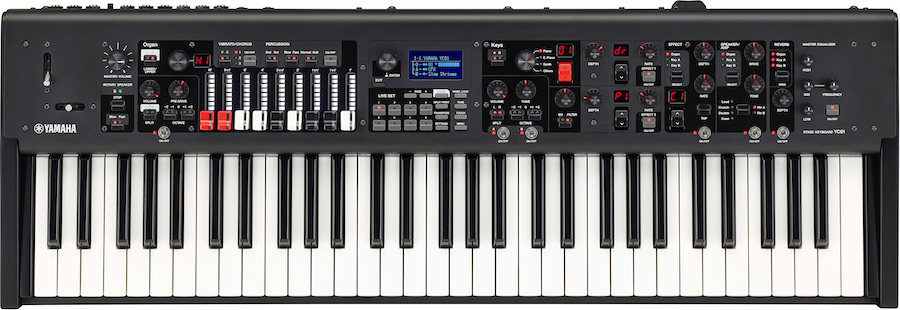Feels like Winter NAMM 2020 came and went already. Here’s a short round-up of products that don’t or won’t get big press.
BeatBox by rhythmo is a do-it-yourself cardboard MIDI controller drum kit. The BeatBox is just $159USD. For that tidy sum, you get a BeatBox with a 4×4 grid of pad-like (arcade) buttons, 4 filter knobs, 8 function (arcade) buttons, an internal amplifier, two 15W speakers and 3000 mAh rechargeable battery pack. Everything is housed in an 8″x9″ cardboard chasis. The Beatbox is MIDI mappable and will work with most DAWs. The Beatbox has an USB-B device to host port and can be used as a MIDI controller.
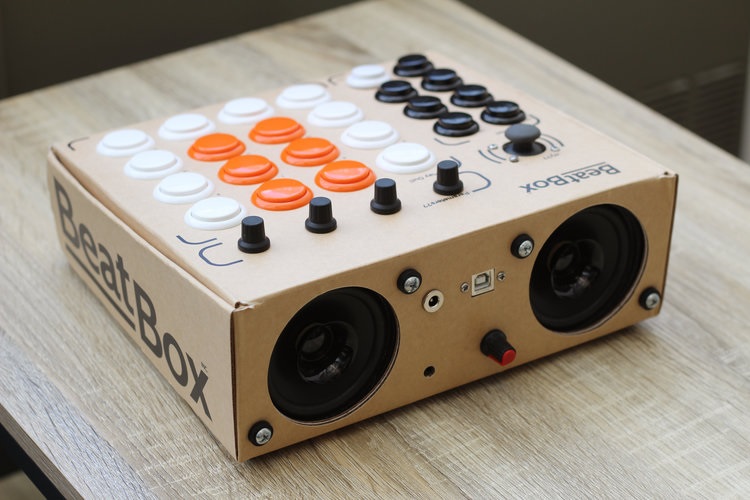
BeatBox is an Indiegogo project. I presume that Beatbox is programmable at the code level although the funding page doesn’t mention what’s inside. Rhythmo Lab is pitching Beatbox at both CES and Winter NAMM 2020.
The Viscount Legend ’70s digital piano is a modular approach to retro piano design. The Legend ’70s is a platform that accepts modules, allowing a player to customize the instrument to their needs. Viscounts have revived the idea of the old Yamaha PLG boards, but the Viscount modules include front panel controls, too.
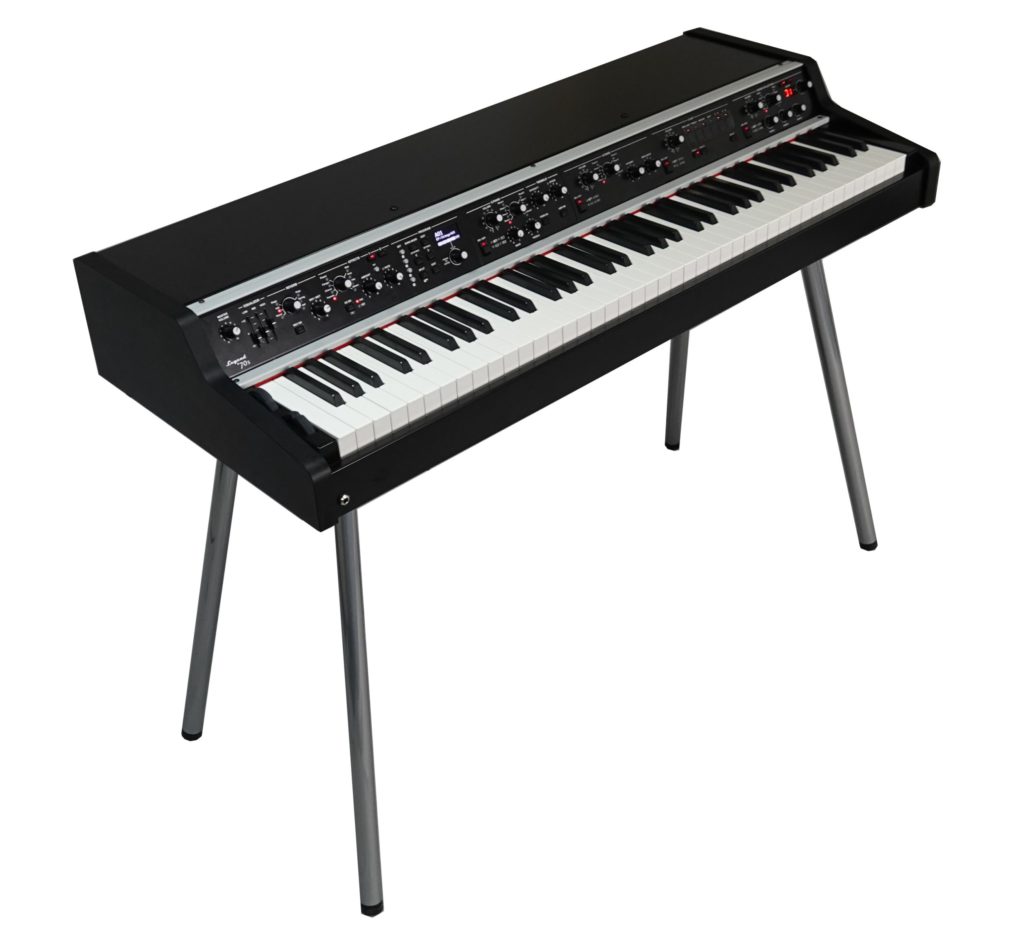
Viscount’s on-line information is a little bit hard to decypher, i.e., what do I get for my money. Anyway, the platform comes in three versions: Compact (73 keys), Artist (88 keys) and Artist-W (88 wooden keys). Hammer action all around. All three come with two modules:
- E.Piano: 5 Rhodes, 2 Wurly, E.Grand
- Sound Collection: Pad, Strings, Choir, Brass, Keyboard, Organ, Bass, Guitar, Bells, Marimba
Sound generaation is physical modeling. The platforms have a good range of effects: Tremolo, chorus, etc., too.
You can add any of three modules to a platform:
- Acoustic Piano Module: 8 sampled pianos, 128 note polyphony
- Clavi Module: 2 physically modeled Clavinets
- External Module: Send MIDI control messages to external gear
The modules have all of the appropriate knobs and buttons as well as the tone generation (and/or control) electronics.
Italy’s Lab4Music have two interesting products: the Sipario MIDI router and the Enjoy MIDI CV controller. The Sipario has 2 MIDI IN DIN connectors, 2 MIDI OUT DIN connectors, and 1 USB port (HOST/DEVICE). It’s programmable and can handle all of the usual chores (e.g., send program change) in addition to routing. It has a touch screen (!) and is built to a robust road-ready standard (metal chassis).
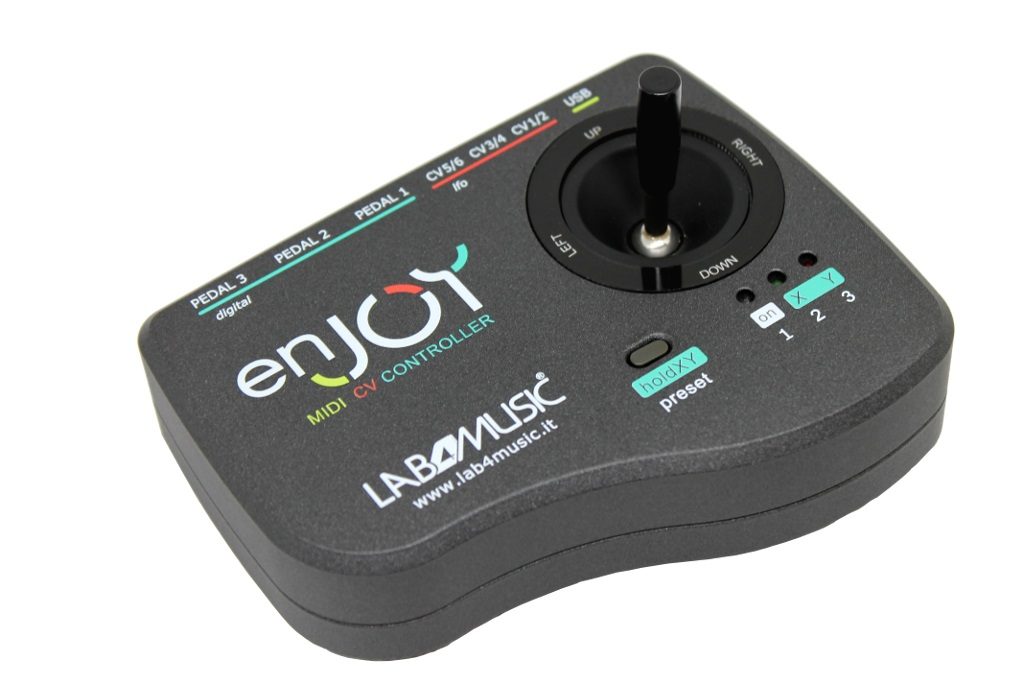
The Lab4Music Enjoy controller bridges MIDI (digital) with control voltage (analog). The digital side is an USB class compliant MIDI device. The analog side can generate CV, gate, pitch, trigger and LFO signals. The Enjoy has a joystick on top as well as expression pedal jacks. The enjoy handles conversion between MIDI messages and analog signals. Ten memory slots are available to hold specific control and conversion configurations.
The Blipblox folks will be releasing an adult version of the Blipblox toy synthesizer: Blipblox After Dark. (As if all synthesizers aren’t toys? 🙂 ) It will have the same signal flow as the original adding a multimode resonant filter, a stereo delay, new oscillator modulation schemes and new kick/snare samples. I can’t say that I like the physical aesthetics, prefering the colors and white chassis of the “kid’s” version.
Back in the do-it-yourself domain, check out the midistomp six button foot controller. It has five latching footswitches and one momentary footswitch. It’s USB over MIDI — no MIDI DINs. The midistomp is based on the Arduino Teensy which means user code! Hurray! An assembled midistomp is $99USD. Or choose a DIY kit of parts for $85USD.
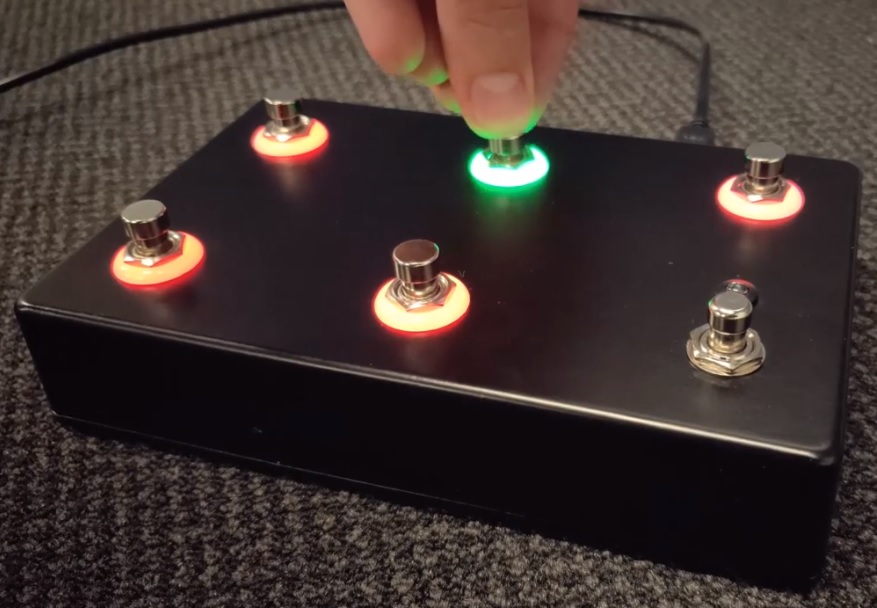
Copyright © 2020 Paul J. Drongowski

